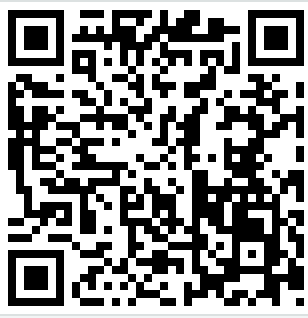Malicious Images: What's a QR Code
I just wrote a quick note about the Cisco warranty CD mixup. While writing that, it came to me that currently quite a few of our readers may be visiting Las Vegas for this summers security drink fest. Historically, this has been a time to play various pranks on the audience of these conferences. In the past, fake ATMs, odd wifi networks, weird BGP issues and other tricks were mentioned.
One thing to look out for this year may be QR codes. 25% of internet users are now apparently using mobile devices. Many of them have known vulnerabilities the owner didn't bother to patch yet. At Vegas this week, you may prefer using your mobile device via 3G networks to avoid the notoriously unsafe Wifi networks offered at these conferences.
But there is one problem with mobile devices: The keyboard typically stinks. In particular on cell phones. To help you with that, we have "QR" codes. QR codes are bar codes that encode text and are commonly understood by mobile devices. Take a picture of it, and an app will take you to the encoded URL. Sadly, most people are not all that good in encoding barcode, and have no idea what they are entering. Compare it to handing your phone to a "friend" and telling them to type for you.
These barcodes can link directly to browser exploits, or could include other malicious content to manipulate your phone. If you spot a malicious code, let us know ... most of the applications will tell you what URL they are going to open up before they actually load it (similar to some of the short code URLs).

------
Johannes B. Ullrich, Ph.D.
SANS Technology Institute
Twitter
| Application Security: Securing Web Apps, APIs, and Microservices | Orlando | Mar 29th - Apr 3rd 2026 |


Comments
pangrazi
Aug 3rd 2011
1 decade ago
dereka
Aug 3rd 2011
1 decade ago
It also won't help if the URL is not recognizable as risky. How many people can identify a suspicious URL on sight?
...random evil thought: I wonder how long it would take the QR for goatse to become recognizable by people?
http://qrcode.kaywa.com/img.php?s=8&d=http%3A%2F%2Fgoatse.cx
Putting that up various places might be an effective way to train people to not scan random QRs...
John Hardin
Aug 3rd 2011
1 decade ago
This had the practical effect of destroying any secret keys you had already stored.
They fixed this in version 0.64 which came out as an update on the android market a week or so ago.
No mention in the changelog of the security fix though.
If anyone is interested the bug or qrcode of death, they are shown here: https://code.google.com/p/google-authenticator/issues/detail?id=36
As a side note, I think the google authenticator app is absolutely awesome and I would recommend it to anyone.
zyclon
Aug 3rd 2011
1 decade ago
joeblow
Aug 4th 2011
1 decade ago
cchristianson
Aug 4th 2011
1 decade ago